Explore Nuwara Eliya - Sri Lanka Travel, Asia
Tucked away in the Central Highlands of Sri Lanka, Nuwara Eliya is often called “Little England”. With its rolling tea plantations, cool misty mornings, and colonial charm, this mountain town feels like a step into another world. Travelers come here to breathe fresh air, walk through flower gardens, sip the finest Ceylon Tea, and enjoy a pace of life far from the island’s busy cities. Whether you’re drawn by scenic landscapes, heritage architecture, or the warmth of its people, Nuwara Eliya is a destination that blends nature, culture, and history in perfect harmony.
Population: Approximately 781,000 in 2023.
Economy: Nuwara Eliya’s economy thrives mainly on tea production, as it sits in the heart of Sri Lanka’s central highlands, famous worldwide for Ceylon Tea. The city also benefits from a growing tourism industry, attracting visitors with its colonial charm, cool climate, and scenic landscapes.
Landmarks: Famous for Gregory Lake, Hakgala Botanical Garden, and Victoria Park.
Sri Lanka
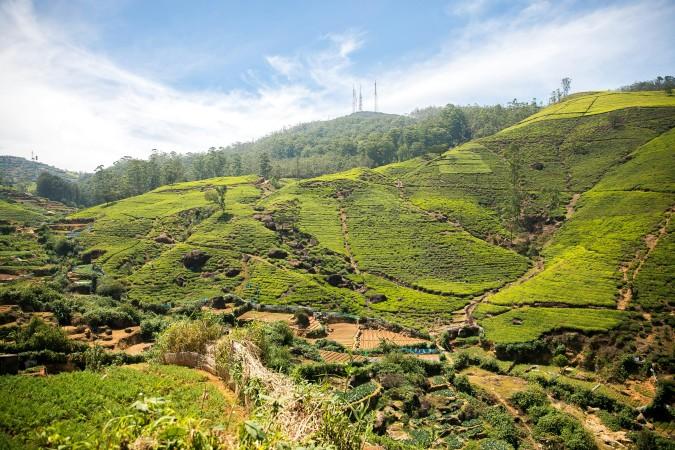
Overview of Nuwara Eliya
History & Cultural Influence
The story of Nuwara Eliya is deeply tied to Sri Lanka’s colonial past. In the early 19th century, the British discovered this cool, fertile plateau and transformed it into their hill station retreat. They built bungalows, golf courses, race tracks, and even a post office that still stands today. But their greatest legacy was the introduction of tea cultivation. What began as an experiment has grown into one of the world’s most famous exports, Ceylon Tea.
Beyond British footprints, Nuwara Eliya carries layers of cultural fusion. The Sinhalese, Tamil, and Indian communities shaped its social fabric, from temples and churches to bustling markets. This mix of traditions gives the city a unique identity where European elegance blends with Sri Lankan vibrance.
Interaction with The Locals
Meeting the people of Nuwara Eliya is as memorable as seeing its landscapes. The highland communities are known for their hospitality and warmth. Walk through the central market, and you’ll see farmers selling fresh strawberries, vegetables, and flowers. Visit a tea estate, and you may chat with workers who still pluck leaves by hand, carrying forward skills passed down for generations. Staying in a family-run guesthouse or sharing a cup of tea with locals opens doors to authentic experiences.
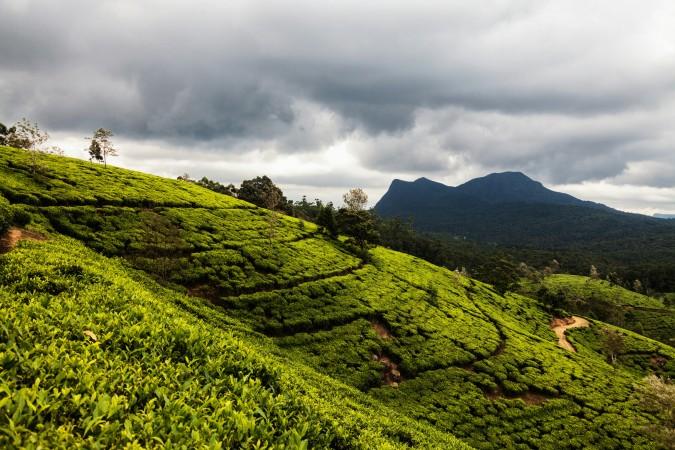
Top Attractions in Nuwara Eliya
Gregory Lake
Set against misty hills, Gregory Lake is the heart of leisure in Nuwara Eliya. Built during the British colonial era, it was once used for recreational activities by governors and their families. Today, it’s a lively hub for boat rides, paddle swans, pony rides, and cycling paths that circle the water. Families spread picnic mats on the grassy banks, while food vendors serve hot snacks and fresh strawberries. In the evenings, the lake glows with lights, offering a relaxed atmosphere that blends nature and local culture.
Hakgala Botanical Garden
A paradise for nature lovers, the Hakgala Botanical Garden sits at the base of Hakgala Rock. Established in the 19th century, it is one of the highest botanical gardens in the world. The cool climate allows rare plants from temperate zones to flourish, ranging from Japanese cherry blossoms to giant ferns. Orchids, roses, and medicinal herbs create a living library of biodiversity. Walking along shaded paths feels like stepping into a tropical–temperate fusion garden, where every corner reveals a new splash of color.
Victoria Park
Located in the town center, Victoria Park is a green jewel named after Queen Victoria. Originally designed as a research field for Hakgala plants, it has grown into one of Sri Lanka’s most beautiful public parks. The well-kept lawns, vibrant flowerbeds, and old trees create a perfect escape for morning walks and family outings. Bird enthusiasts flock here to spot rare species like the Indian Blue Robin and Kashmir Flycatcher. During April, the park bursts into bloom, drawing photographers and honeymooners seeking colorful backdrops.
Tea Estates & Factories
No trip to Nuwara Eliya is complete without visiting a tea plantation. Rolling green hills stretch as far as the eye can see, dotted with tea pickers carrying baskets on their backs. Guided tours through estates like Pedro or Labookellie show how tender leaves are plucked, withered, rolled, and transformed into world-famous Ceylon Tea. Inside the factory, travelers learn about the grading process before enjoying a tasting session with sweeping views of the mountains. It’s an immersive journey into the heritage, science, and culture of tea.
Lover’s Leap Waterfall
A short, scenic hike leads to Lover’s Leap Waterfall, a 30-meter cascade surrounded by tea fields and pine forests. Local legend tells of two lovers who leapt to their fate here, giving the site a romantic yet mystical aura. Beyond the folklore, the trail rewards hikers with panoramic views of the town and the central highlands. It’s an ideal spot for photography, quiet reflection, and picnics. The fresh mountain breeze and rushing water make it a refreshing pause from city life.
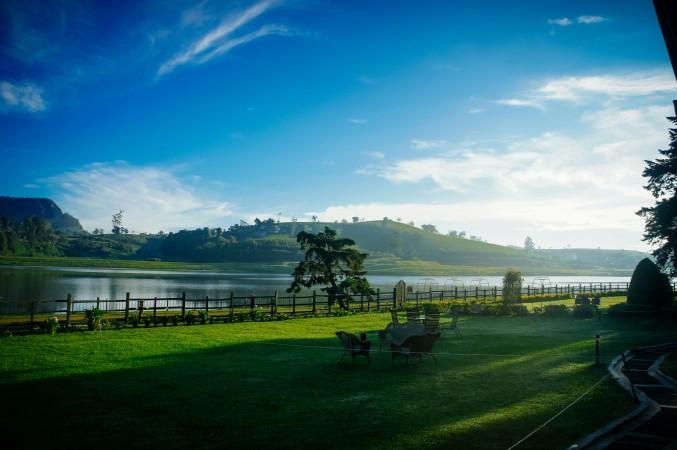
Must-Try Dishes in Nuwara Eliya
- Rice and Curry: The backbone of Sri Lankan cuisine, rice and curry is a colorful platter of steamed rice served with a mix of curries, including lentils, vegetables, and sometimes chicken or fish.
- Fresh Trout Fish: Nuwara Eliya’s cool waters make it one of the few places in Sri Lanka where trout fish thrive. Often pan-fried or grilled, trout is served with lemon, herbs, and garden vegetables.
- Hoppers (Appa): A favorite breakfast or snack, hoppers are bowl-shaped pancakes made from fermented rice flour and coconut milk. Crispy at the edges and soft in the center, they can be enjoyed plain, with coconut sambol, or with an egg cracked into the middle.
- String Hoppers (Idiyappam): Unlike hoppers, string hoppers are delicate rice noodles pressed into thin spirals and steamed. They are usually eaten with dhal curry or coconut gravy, making them a light yet flavorful dish. Popular for both breakfast and dinner, string hoppers reflect the Tamil influence in Sri Lankan cuisine.
- Kothu Roti: For something hearty and full of flavor, try kothu roti. It’s made by chopping flatbread into small pieces and stir-frying it with vegetables, eggs, and either chicken, beef, or seafood. The rhythmic clanging sound of kothu being prepared on an iron griddle is as iconic as the dish itself.
- Pol Sambol (Coconut Sambol): A fiery side dish made from freshly grated coconut, red chili, lime, and onions, pol sambol is served with almost everything, from rice to hoppers. It adds a spicy, tangy kick and is a flavor that defines Sri Lankan meals.
- Parippu (Dhal Curry): A simple yet comforting dish, parippu is made from red lentils cooked with coconut milk and spices. Found on every Sri Lankan table, it pairs perfectly with rice, string hoppers, or roti. Its mild creaminess balances out spicier curries.
- Milk Rice (Kiribath): Often served during celebrations and festivals, kiribath is rice cooked in coconut milk, cut into diamond-shaped pieces, and served with chili paste or jaggery.
- Tea-Infused Treats: No visit to Nuwara Eliya is complete without indulging in tea culture. Beyond sipping freshly brewed Ceylon Tea, travelers can try tea-infused cakes, cookies, and ice cream found in highland cafés. The flavors are delicate yet aromatic, a sweet tribute to the town’s tea heritage.
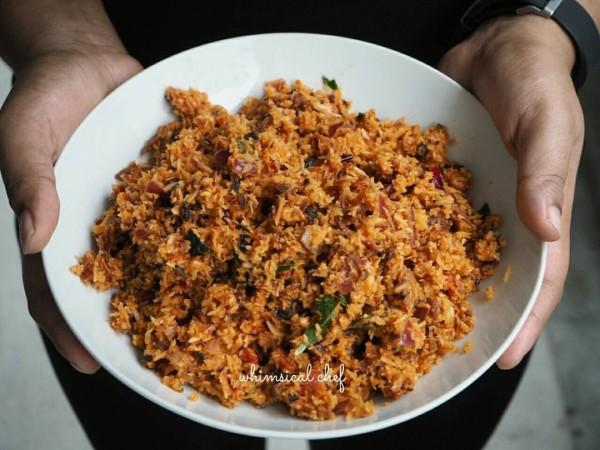
Festivals & Local Celebrations
Nuwara Eliya Season (April Festival)
April marks the most exciting time of year in Nuwara Eliya. Known as the April Season, the town transforms into a carnival-like hub. The season features horse races, motor races, flower exhibitions, and musical shows. Gregory Lake fills with boating events, while the Golf Club welcomes international tournaments. It’s when both locals and tourists gather to celebrate the town’s colonial past and vibrant present.
Sinhala and Tamil New Year (Avurudu)
Falling in mid-April, the Sinhala and Tamil New Year, or Avurudu, is one of Sri Lanka’s biggest cultural celebrations. Families in Nuwara Eliya come together to prepare milk rice (kiribath), play traditional games, and exchange gifts. The atmosphere is festive and colorful, with firecrackers, village fairs, and community rituals that welcome prosperity for the year ahead.
Religious Festivals
Nuwara Eliya’s diverse community means that both Hindu and Buddhist festivals are celebrated with equal enthusiasm. Temples light up during Diwali (Festival of Lights), while Vesak (marking the Buddha’s birth, enlightenment, and passing) fills the streets with lanterns and processions. Christian celebrations, such as Christmas and Easter, add to the festive calendar, with colonial churches hosting midnight Masses and concerts.
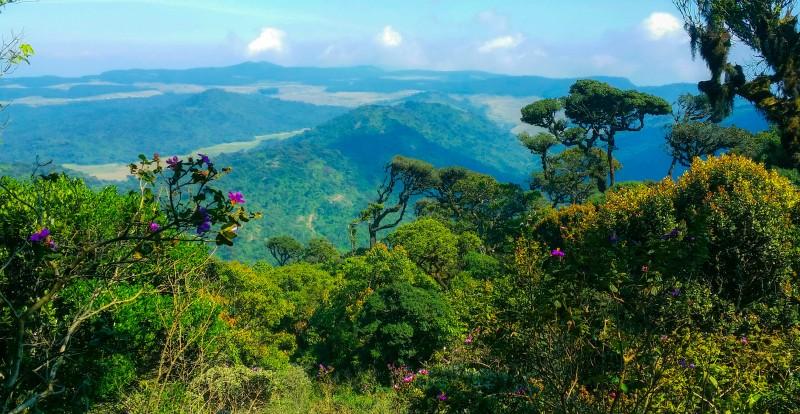
What to Do in Nuwara Eliya
- Tea Plantation Tours: Step into the heart of Sri Lanka’s tea industry with a guided tea estate tour. Visit working plantations like Pedro Tea Estate or Labookellie Tea Factory, where you can see tea leaves being hand-plucked and processed. End your tour with a warm cup of fresh Ceylon Tea and a panoramic view of mist-covered hills.
- Hiking and Nature Trails: Lace up your boots for Horton Plains National Park, one of Sri Lanka’s most stunning nature reserves. The World’s End cliff offers jaw-dropping views on clear mornings. Closer to town, trails like Shanthipura viewpoint and Lover’s Leap Waterfall hike give you peaceful, off-the-beaten-path experiences.
- Boating and Pony Rides at Gregory Lake: Enjoy the fresh air and scenery with swan paddle boats or speedboat rides on Gregory Lake. Pony rides are a popular choice for families, especially during the spring season. You can also rent bicycles to circle the lake at your own pace.
- Golfing at Nuwara Eliya Golf Club: Established in 1889, the Nuwara Eliya Golf Club is one of the oldest in Asia. The cool weather and colonial backdrop make it a unique place to tee off. Visitors are welcome to try a round, even without a membership.
- Horseback Riding & Farm Visits: Explore the countryside on horseback or visit nearby strawberry farms where you can pick your own fruit. These activities offer a peaceful, interactive connection to rural life in the highlands.
Shopping in Nuwara Eliya
- Ceylon Tea & Local Spices: Visit local tea boutiques and factory outlets to buy fresh, high-grade Ceylon Tea, including black, green, or flavored with herbs and flowers. Packets are vacuum-sealed for freshness and make perfect gifts. Also look for cinnamon, cardamom, and pepper, grown in Sri Lanka’s rich soil.
- Strawberry & Vegetable Markets: Thanks to its cool climate, Nuwara Eliya is famous for fresh strawberries, often sold with cream or turned into jams. The central market offers seasonal produce like carrots, leeks, lettuce, and potatoes, straight from nearby farms.
- Handmade Woolens and Garments: Given the cool weather, local shops sell hand-knitted sweaters, scarves, and hats, often made from Sri Lankan wool. These are both practical and thoughtful souvenirs.
- Crafts and Souvenirs: Pick up wood carvings, batik fabrics, postcards, and tea sets at souvenir shops near the town center. Most items are made by local artisans and reflect the town’s colonial-meets-rural character.
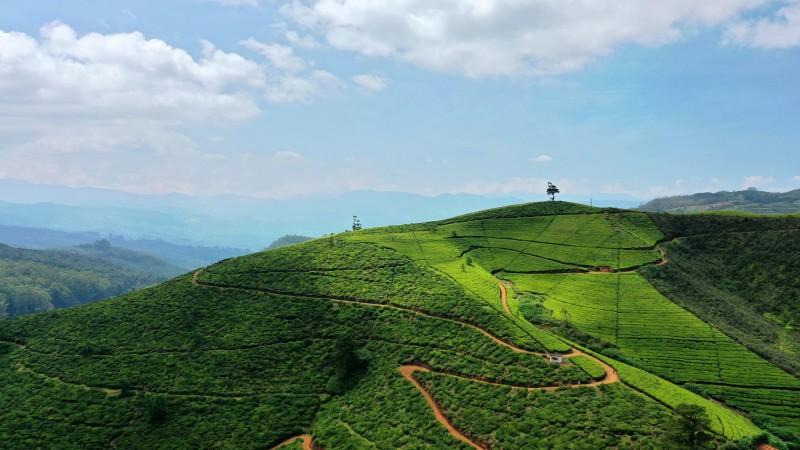
Weather in Nuwara Eliya: Best Time to Visit
Overall Climate
The average temperature ranges between 10°C and 20°C (50°F–68°F). Mornings are crisp, afternoons are pleasantly warm, and evenings can be chilly, especially from December to February. It’s common to see locals and travelers alike wrapped in sweaters and scarves, sipping warm Ceylon Tea. Nuwara Eliya receives frequent rainfall, especially from May to September, during the southwest monsoon. Mist and fog often roll in during the early mornings and evenings, adding a mystical atmosphere to the hills and tea plantations. While rain can be unpredictable, it rarely disrupts travel plans for long.
Best Time to Visit
The most popular time to visit is during the dry season, from February to April. April is especially festive, with clear skies and blooming flowers, coinciding with the famous Nuwara Eliya Season. This period offers the best weather for hiking, boating, flower shows, and other outdoor activities.
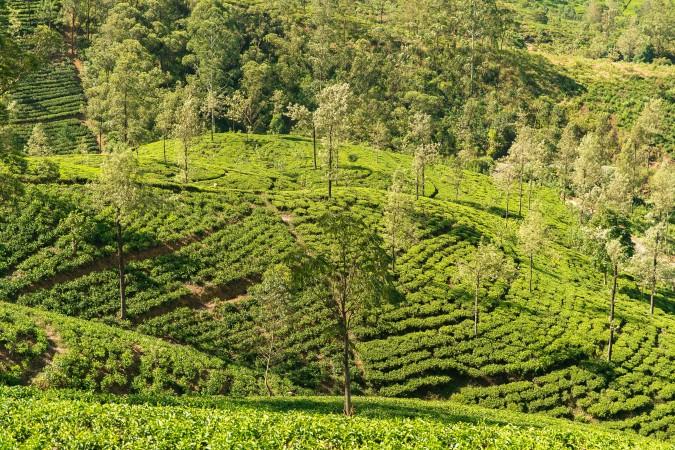
Essential Travel Information
Getting Around Nuwara Eliya
- By Bus: Public and private buses run daily from Colombo, Kandy, and Ella to Nuwara Eliya. Though slower than private transport, buses are budget-friendly and allow you to travel like a local.
- By Train: The train journey from Kandy to Nanu Oya (the closest station to Nuwara Eliya) is one of the most scenic in the world. Blue carriages pass through lush tea estates, waterfalls, and colonial towns.
- By Taxi or Private Car: For comfort and flexibility, travelers often hire private taxis or use ride-hailing apps for intercity travel. The drive from Kandy takes about 3–4 hours and offers stunning views along the way.
- By Tuk-Tuk & Bikes: In town, the best way to explore is by tuk-tuk—they’re everywhere, affordable, and often driven by friendly locals happy to give tips. You can also rent a bicycle or motorbike for a more independent and eco-friendly.
ATM & Banking Services
Although Nuwara Eliya is a relatively small town, it offers reliable access to banking and ATM services, especially around the town center and market area. Major banks such as Bank of Ceylon, Commercial Bank, Sampath Bank, and Hatton National Bank (HNB) operate branches with 24/7 ATMs in Nuwara Eliya. These machines accept most international debit and credit cards, including Visa and Mastercard. While some mid-range hotels and shops accept cards, it’s wise to carry enough LKR, especially when venturing outside the central area.
Where to Stay in Nuwara Eliya
- Luxury Hotels & Colonial Bungalows: For travelers seeking comfort and heritage, colonial-era bungalows and luxury resorts provide elegant rooms, high tea, fireplaces, and manicured gardens. Options include renovated governor’s mansions and lakeside villas with panoramic mountain views.
- Mid-Range Guesthouses & Family Stays: Mid-range options in Nuwara Eliya balance affordability with warmth. These are often family-run guesthouses, where homemade meals, garden views, and insider travel tips come standard. Many are located just outside the town center, offering peace with easy access.
- Eco-Lodges & Farm Stays: For a deeper connection with nature, try eco-lodges, tea estate stays, or strawberry farm cottages. These unique accommodations combine sustainability with immersive local experiences, perfect for slow travelers and couples seeking serenity.
Des articles pour vous

Explore Yala National Park - Sri Lanka Travel, Asia
Tucked away in Sri Lanka’s southeastern corner, Yala National Park is where wild nature meets deep tradition. Known worldwide for its leopard population, the park is also home to elephants, sloth bears, crocodiles, and hundreds of bird species. Beyond wildlife, Yala opens doors to a cultural landscape dotted with ancient temples, Buddhist ruins, and coastal villages. For travelers seeking more than just a safari, Yala offers a chance to explore eco-tourism, local communities, and sacred heritage sites.
Population: The Yala National Park area doesn’t have a human population.
Economy: The economy around Yala National Park thrives on a blend of eco-tourism, agriculture, and local services. Safari tours, eco-lodges, and cultural experiences drive steady income for nearby towns like Tissamaharama and Kataragama, supporting thousands of families.
Landmarks: Famous for Block I of Yala and wildlife encounters, including elephants, sloth bears, crocodiles, and exotic bird species.

Explore Galle - Sri Lanka Travel, Asia
Nestled on Sri Lanka’s southern coastline, Galle is a vibrant city where history meets the sea. Its cobbled streets, colonial architecture, and serene beaches make it a must-visit destination for travelers seeking a blend of culture, adventure, and relaxation. A UNESCO World Heritage site, Galle captivates visitors with its Dutch Fort, bustling markets, and friendly locals. Whether you’re exploring the ramparts at sunset or savoring fresh seafood by the shore, Galle promises an unforgettable journey into Sri Lanka’s heritage.
Population: Approximately 113,000 in 2023.
Economy: Galle’s economy thrives on tourism, trade, and fisheries. The city’s historic fort, colonial architecture, and coastal charm draw thousands of international visitors each year, making tourism its main economic driver. Fishing remains vital for local livelihoods, supplying fresh seafood across the region.
Landmarks: Famous for the Galle Fort, Dutch Reformed Church & Maritime Museum, and Unawatuna Beach.

Explore Bentota - Sri Lanka Travel, Asia
Nestled along Sri Lanka’s southwestern coast, Bentota is a tropical paradise that blends golden beaches, vibrant culture, and thrilling adventures. Famous for its calm waters, luxury resorts, and scenic river estuary, Bentota has become a top destination for travelers seeking both relaxation and authentic experiences. From serene beach walks at sunrise to adrenaline-pumping water sports, this coastal town offers a perfect balance of leisure and exploration. With its proximity to Colombo and Galle, Bentota is easy to reach, making it an ideal stop for both short escapes and extended holidays.
Population: Approximately 37,000 in 2023.
Economy: Bentota’s economy thrives mainly on tourism, which drives local businesses such as hotels, restaurants, and wellness retreats. The town also benefits from fishing, coconut cultivation, and handicrafts like wood carving and batik textiles. Many residents rely on the growing demand for water sports and Ayurvedic treatments, making tourism the backbone of both income and employment in the area.
Landmarks: Famous for Bentota Beach, Bentota River Safari, and Kande Vihara Temple.

Explore Mirissa - Sri Lanka Travel, Asia
Mirissa is a charming coastal town on Sri Lanka’s southern shoreline. Known for its golden beaches, turquoise waters, and vibrant marine life, it has become a must-visit stop for travelers exploring the island. Many come for whale watching, surfing, and sunset views at Coconut Tree Hill, but Mirissa offers much more than postcard beauty. The fishing boats you see anchored by the bay carry generations of stories. Local traditions, delicious cuisine, and a laid-back rhythm of life shape every visitor’s experience.
Population: Approximately 4,700 in 2023.
Economy: Mirissa’s economy is largely shaped by its coastal location. Fishing has long been the backbone of local livelihoods, with generations relying on the Indian Ocean for income. In recent decades, tourism has become the main driver of growth, thanks to whale watching, surfing, and beachside hospitality.
Landmarks: Famous for Mirissa Beach, Coconut Tree Hill, and Parrot Rock Bridge.

Explore Nuwara Eliya - Sri Lanka Travel, Asia
Tucked away in the Central Highlands of Sri Lanka, Nuwara Eliya is often called “Little England”. With its rolling tea plantations, cool misty mornings, and colonial charm, this mountain town feels like a step into another world. Travelers come here to breathe fresh air, walk through flower gardens, sip the finest Ceylon Tea, and enjoy a pace of life far from the island’s busy cities. Whether you’re drawn by scenic landscapes, heritage architecture, or the warmth of its people, Nuwara Eliya is a destination that blends nature, culture, and history in perfect harmony.
Population: Approximately 781,000 in 2023.
Economy: Nuwara Eliya’s economy thrives mainly on tea production, as it sits in the heart of Sri Lanka’s central highlands, famous worldwide for Ceylon Tea. The city also benefits from a growing tourism industry, attracting visitors with its colonial charm, cool climate, and scenic landscapes.
Landmarks: Famous for Gregory Lake, Hakgala Botanical Garden, and Victoria Park.

Explore Sukau - Malaysia Travel, Asia
Nestled on the banks of the Kinabatangan River in Sabah, Malaysian Borneo, Sukau is a destination where wildlife, culture, and conservation come together. Known as one of Asia’s top spots for river safaris and eco-tourism, this quiet village offers a front-row seat to encounters with Bornean orangutans, pygmy elephants, proboscis monkeys, and exotic birdlife.
Population: Approximately 1,400 in 2019.
Economy: Sukau’s economy is shaped by its riverine location and natural resources. Traditionally, the Orang Sungai community relied on fishing, small-scale farming, and forest gathering for their livelihood. Today, the village has shifted toward eco-tourism, with river cruises, jungle trekking, and homestays providing income.
Landmarks: Famous for the Kinabatangan River cruises, Gomantong Caves, and Ox-bow lakes and wetlands.
